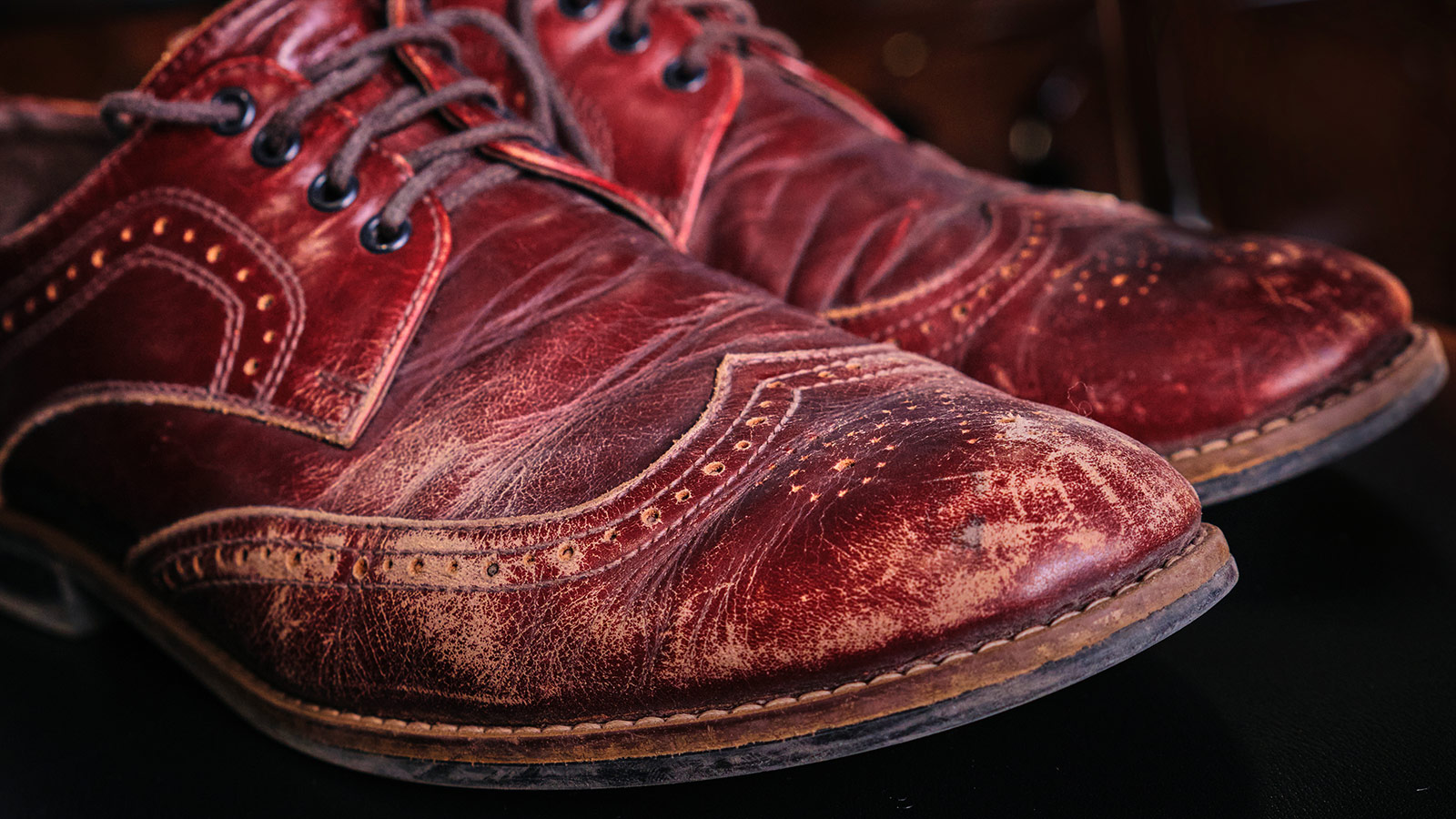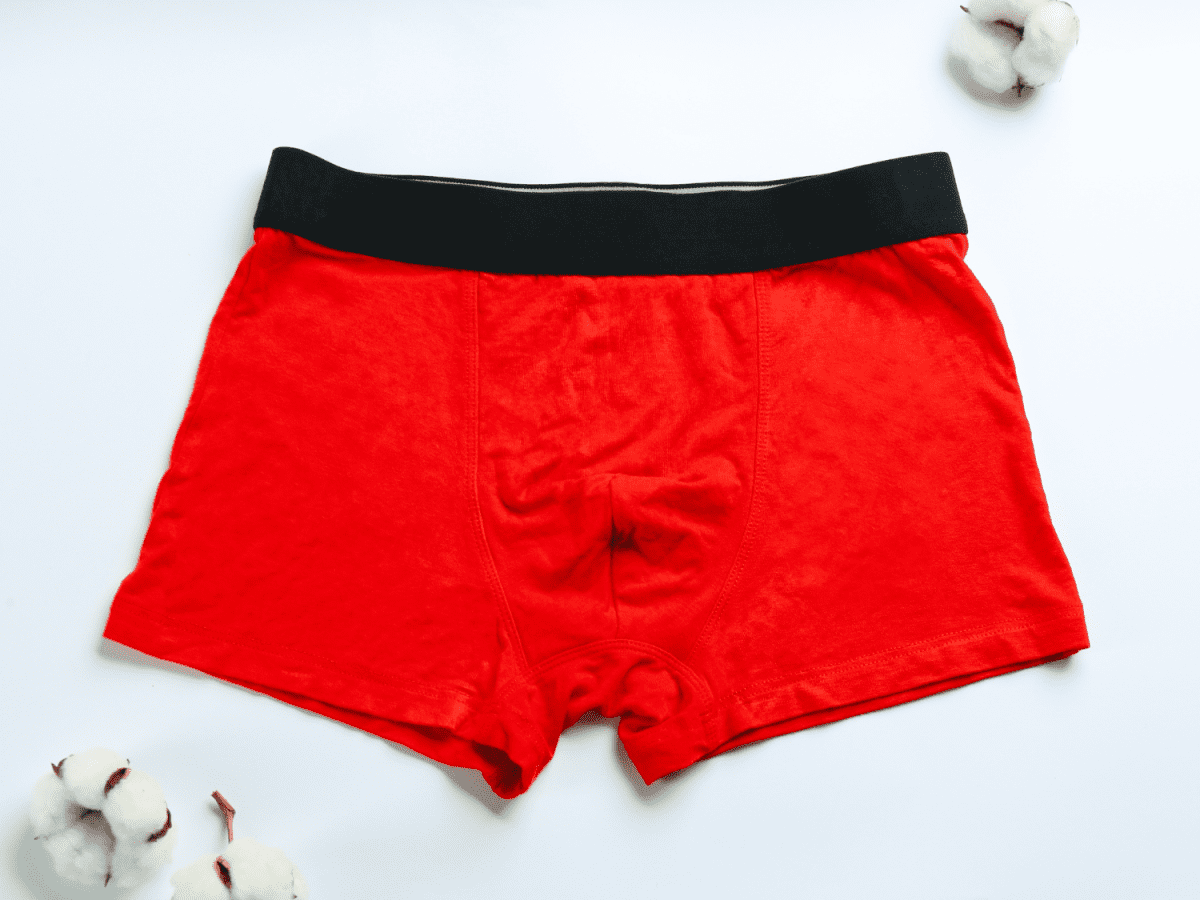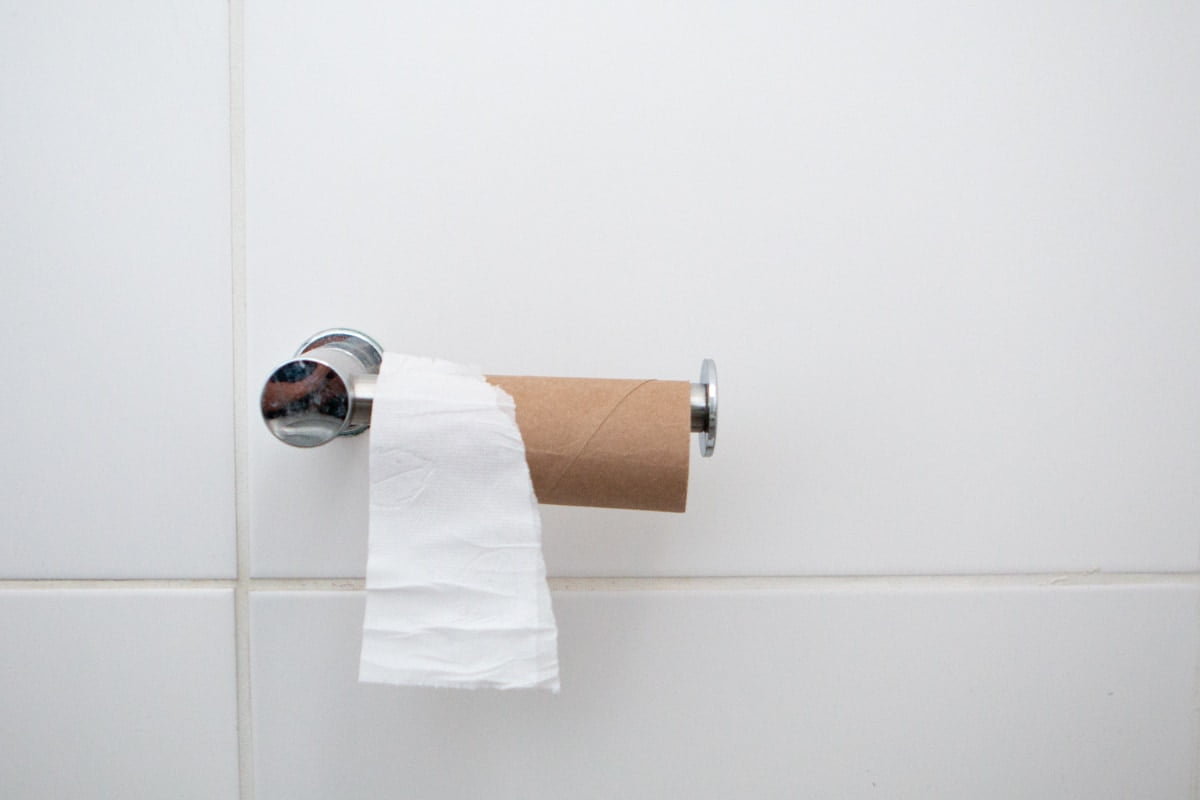

FAQs
Why Do I Get Skid Marks In My Underwear
Modified: September 23, 2023
Curious about those pesky skid marks in your underwear? Find out why they happen and how to prevent them in our comprehensive guide on general questions.
(Many of the links in this article redirect to a specific reviewed product. Your purchase of these products through affiliate links helps to generate commission for Under-tec.com, at no extra cost. Learn more)
Table of Contents
Introduction
Skid marks in underwear can be an embarrassing and frustrating issue that many people experience. Whether you find them appearing frequently or only occasionally, the presence of skid marks can leave you wondering why it happens and how to prevent it. Understanding the causes and taking preventive measures can help you maintain better hygiene and confidence.
Skid marks, often brown or yellowish in color, are remnants of fecal matter that stick to the underwear after bowel movements. They can be caused by a variety of factors, ranging from improper wiping techniques to health conditions and even dietary choices. It’s important to note that skid marks are a common occurrence and can happen to anyone, regardless of age or gender.
In this article, we will delve into the different factors that contribute to the formation of skid marks and explore effective methods to prevent them. By adopting proper hygiene practices, improving dietary habits, and seeking medical advice if necessary, you can significantly reduce the occurrence of skid marks and maintain a fresh and clean feeling throughout the day.
Understanding Skid Marks
Skid marks, also known as fecal streaks or fecal residue, refer to the stains that appear on underwear after using the toilet. They are a common phenomenon experienced by people of all ages and genders. Understanding the nature of skid marks can help debunk misconceptions and implement effective preventive measures.
The appearance of skid marks is mainly due to the residual fecal matter that remains on the body after incomplete or improper wiping. The use of poor wiping techniques can leave behind tiny particles of stool, which can later transfer to underwear and cause stains. In some cases, skid marks may also result from excessive sweat or moisture in the anal area.
It is important to note that skid marks are not necessarily an indicator of poor hygiene. Even with meticulous cleaning, microscopic traces of feces can still remain, especially if not properly addressed. These remnants can be easily transferred to underwear, resulting in skid marks.
Skid marks can vary in appearance and color, depending on factors such as the individual’s diet, the consistency of their stool, and the type of fabric in their underwear. The color of skid marks can range from light brown to yellowish or even dark brown. The intensity of the stain may also vary, from faint marks to more prominent streaks.
While skid marks are generally harmless, they can cause embarrassment and discomfort if left unaddressed. It is essential to understand the underlying causes of skid marks to effectively prevent their occurrence. In the following sections, we will discuss the various factors that contribute to skid marks in detail and provide practical tips on how to avoid them.
Causes of Skid Marks
Skid marks in underwear can be attributed to several factors, ranging from improper wiping techniques to health conditions and dietary choices. Understanding these causes can help you identify the root of the problem and take appropriate preventive measures.
Improper Wiping Techniques: One of the primary causes of skid marks is inadequate wiping after bowel movements. Insufficient wiping or not cleaning thoroughly can leave behind traces of fecal matter, which can later transfer to underwear and result in stains. It is important to practice proper wiping techniques, ensuring that you clean the anal area thoroughly using gentle but firm motions.
Inadequate Hygiene Practices: Poor overall hygiene can also contribute to the occurrence of skid marks. Not maintaining proper cleanliness in the anal area can lead to the accumulation of bacteria and residual fecal matter, which can then stain underwear. Regular bathing or showering and thorough cleaning of the anal area can help prevent skid marks.
Dietary Factors: Your diet can play a significant role in the consistency of your stool, which can impact the likelihood of skid marks. Consuming a diet high in processed foods, low in fiber, or lacking in hydration can lead to firmer stools that are more difficult to clean. On the other hand, a diet rich in fiber, fruits, and vegetables can promote softer and more easily eliminated stools, reducing the chances of skid marks.
Health Conditions: Certain health conditions can contribute to the occurrence of skid marks. Conditions like diarrhea, irritable bowel syndrome (IBS), or inflammatory bowel disease (IBD) can result in looser stools that are harder to fully clean. If you have an underlying health condition, it is important to work with your healthcare provider to manage and treat it effectively, which may help reduce skid marks.
Effect of Clothing Choice: The type of fabric used in your underwear can also influence the appearance of skid marks. Synthetic or tight-fitting underwear can increase moisture and friction, creating a favorable environment for skid marks to develop. Opting for breathable and moisture-wicking fabrics like cotton can help reduce the likelihood of skid marks.
By understanding these causes, you can take proactive steps to prevent skid marks and maintain better hygiene. In the next sections, we will explore practical tips and strategies to minimize the occurrence of skid marks and keep your underwear clean and stain-free.
Improper Wiping Techniques
Improper wiping techniques after using the toilet can contribute to the formation of skid marks in underwear. Insufficient cleaning or not cleaning thoroughly enough can leave behind traces of fecal matter, which can later transfer to underwear and result in stains. To avoid this, it is essential to adopt proper wiping techniques.
Here are some tips to ensure effective and thorough cleaning:
- Use Toilet Paper Properly: When wiping, make sure to fold the toilet paper to create multiple layers. This helps prevent the paper from tearing or breaking during use. Avoid using excessive force or rubbing vigorously, as it can irritate the skin and cause discomfort.
- Wipe from Front to Back: For women, it is crucial to wipe from front to back to prevent the transfer of bacteria from the anal area to the vaginal area, which can lead to infections. Men should also follow a similar wiping direction for hygienic purposes.
- Opt for Moist Toilet Wipes: Consider incorporating moist toilet wipes into your routine. These wipes can provide better cleaning than dry toilet paper alone. However, it is important to choose wipes that are free from irritants and fragrance, as these can potentially cause skin irritation.
- Thorough Cleaning of the Anal Area: Ensure that you clean the entire anal area, including the perineum, using gentle but firm motions. Take the time to clean all folds and crevices to eliminate any residue. It may be helpful to use a handheld bidet or a wet washcloth for more thorough cleaning.
- Finish with Dry Toilet Paper: After using moist toilet wipes, use dry toilet paper to pat the area dry. This helps remove any excess moisture, which can contribute to discomfort or irritation. Remember to discard the used wipes and toilet paper properly to maintain good hygiene.
By adopting proper wiping techniques, you can reduce the risk of leaving behind traces of fecal matter and prevent skid marks from forming. It is also important to note that maintaining good hygiene practices overall, such as regular bathing or showering, can complement your wiping routine and contribute to a clean and fresh feeling throughout the day.
Inadequate Hygiene Practices
Poor overall hygiene practices can contribute to the occurrence of skid marks in underwear. Failing to maintain proper cleanliness in the anal area can lead to the accumulation of bacteria and residual fecal matter, which can then transfer to underwear and result in stains. To prevent skid marks, it is crucial to adopt adequate hygiene practices.
Here are some tips to maintain good hygiene:
- Regular Bathing or Showering: Take regular showers or baths to keep your body clean, including the anal area. Use a mild, fragrance-free soap to cleanse the area gently. Pay attention to all the folds and crevices to eliminate any accumulated bacteria or residue.
- Thoroughly Dry the Anal Area: Ensure that the anal area is dry after bathing or showering to prevent excessive moisture. Moisture can create a favorable environment for bacterial growth and contribute to the development of skid marks. Use a clean towel to pat the area dry or allow it to air dry naturally.
- Change Underwear Daily: Wearing clean underwear each day is essential for maintaining good hygiene. Cotton underwear is breathable and can help absorb moisture, reducing the chances of skid marks. Avoid wearing tight-fitting or synthetic underwear as they can increase moisture and friction, leading to a higher likelihood of skid marks.
- Consider Using Panty Liners: Women may consider using panty liners to provide an extra layer of protection and absorb any moisture or discharge. However, it is important to change the liners regularly to maintain cleanliness and prevent bacterial growth.
- Promote Air Circulation: If possible, allow the anal area to breathe by spending some time without wearing underwear. This can help prevent excess moisture buildup and reduce the risk of skid marks.
By incorporating these hygiene practices into your routine, you can minimize the accumulation of bacteria and residual fecal matter, reducing the chance of skid marks. Remember, good overall hygiene is essential for maintaining cleanliness and keeping the anal area fresh and comfortable.
Dietary Factors
Your diet can significantly affect the consistency of your stool, which in turn can impact the likelihood of skid marks in underwear. Certain dietary factors can contribute to firmer or looser stools, making it important to maintain a balanced diet to prevent skid marks.
Here are some dietary tips to consider:
- Increase Fiber Intake: Consuming an adequate amount of dietary fiber can help promote regular bowel movements and prevent constipation. Fiber adds bulk to the stool, making it easier to pass and reducing the chances of residue remaining in the anal area. Include foods such as fruits, vegetables, whole grains, legumes, and nuts in your diet to boost your fiber intake.
- Drink Plenty of Water: Staying hydrated is essential for maintaining proper digestion and softening the stool. Aim to drink an adequate amount of water throughout the day to help maintain a healthy moisture level in the stool. This can help prevent dry, hard stools that are more difficult to clean properly.
- Avoid Excessive Processed Foods: Processed foods are often low in fiber and high in unhealthy fats, which can contribute to constipation and firm stools. Limit your intake of processed foods, such as fast food, fried snacks, and packaged desserts. Instead, opt for whole, unprocessed foods that are rich in nutrients and fiber.
- Be Mindful of Trigger Foods: Certain foods have a reputation for causing loose stools or diarrhea. These can include spicy foods, greasy foods, caffeine, and alcohol. Pay attention to how these foods affect your bowel movements and consider reducing or avoiding them if they consistently lead to loose stools and skid marks.
- Maintain a Regular Eating Schedule: Establishing a regular eating routine can help regulate your bowel movements. Aim for consistent meal times and avoid skipping meals, as this can disrupt your digestive system and lead to irregularity in stool consistency.
By making dietary adjustments and incorporating these tips into your eating habits, you can promote regular bowel movements and prevent extreme stool consistency that may contribute to skid marks. Remember, maintaining a balanced diet and staying hydrated are essential for overall health and preventing gastrointestinal discomfort.
Health Conditions
Skid marks in underwear can sometimes be associated with underlying health conditions. Certain conditions can affect the consistency of your stool or contribute to difficulty in fully cleaning your anal area, resulting in skid marks. If you experience frequent or persistent skid marks despite practicing proper hygiene, it may be beneficial to seek medical advice.
Here are some health conditions that can contribute to skid marks:
- Diarrhea: Chronic or recurring diarrhea can lead to loose or watery stools, making it challenging to fully clean the anal area. Diarrhea can be caused by various factors such as gastrointestinal infections, food intolerances, medication side effects, or underlying conditions like irritable bowel syndrome (IBS) or inflammatory bowel disease (IBD).
- Constipation: On the other end of the spectrum, chronic constipation can result in hard, dry stools that are more difficult to eliminate completely. Inadequate stool elimination can lead to residue in the anal area, increasing the chance of skid marks.
- Irritable Bowel Syndrome (IBS): IBS is a common digestive disorder characterized by symptoms such as abdominal pain, bloating, and changes in bowel habits. It can cause alternating episodes of constipation and diarrhea, which can contribute to skid marks.
- Inflammatory Bowel Disease (IBD): Conditions like Crohn’s disease and ulcerative colitis, which fall under the umbrella of IBD, can result in inflammation of the digestive tract. This inflammation can lead to changes in bowel habits, including diarrhea or difficulty fully evacuating the bowels, contributing to skid marks.
If you suspect that an underlying health condition is causing your skid marks, it is important to consult with a healthcare professional. They can evaluate your symptoms, conduct any necessary tests, and provide appropriate treatment options to manage the condition effectively. Treating and managing the underlying health condition can help alleviate the occurrence of skid marks.
Remember, if you are experiencing persistent or concerning symptoms, seeking medical advice is always recommended to ensure appropriate diagnosis and treatment.
Effect of Clothing Choice
The type of clothing you choose to wear can have an impact on the occurrence of skid marks. Certain fabrics and styles of underwear can affect moisture levels, airflow, and friction in the anal area, increasing the likelihood of skid marks. Consider these factors when selecting your clothing to minimize the risk of stains.
Here are some considerations regarding clothing choice:
- Choose Breathable Fabrics: Opt for underwear made from breathable materials like cotton. Cotton allows for better air circulation and helps absorb moisture, reducing the chances of excessive sweat or moisture buildup in the anal area. Avoid synthetic fabrics that can trap moisture and create an environment conducive to skid marks.
- Wear the Right Size: Wearing underwear that is too tight or too loose can increase friction and contribute to the formation of skid marks. Ensure that your underwear fits well and provides enough room for movement and airflow. Avoid excessively tight-fitting styles, as they can promote moisture and restrict airflow.
- Avoid Thongs or G-Strings: Thong or G-string style underwear can potentially increase the risk of skid marks due to the narrow strip of fabric that passes between the buttocks. This style can cause friction and may not provide sufficient coverage or support to prevent skid marks.
- Consider Moisture-Wicking Features: Some underwear brands offer moisture-wicking features that help to pull moisture away from the body. This can be particularly beneficial for individuals who tend to sweat more in the anal area, reducing the chances of skid marks.
- Frequent Changing: Changing your underwear regularly throughout the day can help maintain freshness and minimize the chances of skid marks. If you experience excessive sweating or have particularly active days, consider carrying extra pairs of underwear to swap out as needed.
By considering the effects of clothing choice, you can make informed decisions when selecting your underwear. Choosing breathable fabrics, wearing the right size, and being mindful of the style can help minimize friction, moisture, and potential skid marks. Remember that comfort, airflow, and moisture control are essential factors to prioritize when it comes to clothing choices and maintaining good hygiene.
Preventing Skid Marks
While skid marks in underwear can be a common occurrence, there are several preventive measures you can take to reduce their occurrence and maintain better hygiene. By adopting proper wiping techniques, maintaining good hygiene practices, balancing your diet, and seeking medical advice if necessary, you can significantly decrease the occurrence of skid marks.
Here are some effective ways to prevent skid marks:
- Proper Wiping Technique: Ensure that you use proper wiping techniques after using the toilet. Clean the anal area thoroughly using gentle but firm motions. Wipe from front to back (for women) or follow a similar direction (for men) to prevent the transfer of bacteria. Consider using moist toilet wipes for better cleaning.
- Maintain Good Hygiene Practices: Incorporate regular bathing or showering into your routine to keep your body and anal area clean. Thoroughly dry the area after washing to prevent excess moisture. Change your underwear daily, opting for breathable fabrics like cotton. Avoid tight-fitting or synthetic underwear that can increase friction and moisture.
- Balance Your Diet: Consume a well-balanced diet that includes an adequate amount of fiber. Fiber helps promote regular bowel movements and prevents constipation. Stay hydrated by drinking plenty of water to maintain soft stools that are easier to clean.
- Consider Trigger Foods: Be mindful of how certain foods affect your bowel movements. Spicy foods, greasy foods, caffeine, and alcohol can sometimes contribute to loose stools. Pay attention to how your body reacts to these foods and consider reducing or avoiding them if they consistently lead to skid marks.
- Seek Medical Advice: If you experience frequent or persistent skid marks despite practicing proper hygiene and dietary habits, it may be beneficial to consult with a healthcare professional. They can evaluate your symptoms, assess for any underlying health conditions, and provide appropriate treatment or guidance.
By incorporating these preventive measures into your daily routine, you can minimize the occurrence of skid marks and maintain better hygiene. Remember, each person’s body is unique, so it may take some trial and error to find the methods that work best for you. Keep practicing good hygiene habits, listen to your body, and make adjustments as needed to keep your underwear clean and stain-free.
Proper Wiping Technique
Adopting a proper wiping technique after using the toilet is essential for maintaining cleanliness and preventing skid marks in underwear. Here are some guidelines to follow to ensure effective and thorough cleaning:
- Use Adequate Toilet Paper: Start by folding the toilet paper to create multiple layers. This helps prevent the paper from tearing during use. Avoid using excessive amounts of toilet paper as it can be wasteful and may not provide sufficient cleaning.
- Wipe from Front to Back: For women, it is crucial to wipe from front to back to avoid transferring bacteria from the anal area to the vaginal area. Men should also follow a similar direction for optimal hygiene. This helps prevent infections and maintains overall cleanliness.
- Gentle Yet Thorough Cleaning: Use gentle but firm wiping motions to clean the entire anal area, including the perineum. Ensure that you reach all the folds and crevices to eliminate any residual fecal matter. Avoid using excessive force or rubbing vigorously, as it can cause irritation or discomfort.
- Consider Moist Toilet Wipes: To enhance cleanliness and improve the effectiveness of wiping, consider using moist toilet wipes. These wipes provide better cleaning compared to dry toilet paper alone. Choose wipes that are fragrance-free and free from irritants to prevent any potential skin irritation.
- Finish with Dry Toilet Paper: After using moist toilet wipes, pat the area dry with dry toilet paper. This helps remove any excess moisture and ensures that the area is clean and dry. Remember to discard used wipes and toilet paper properly to maintain good hygiene.
Developing a proper wiping technique and incorporating it into your routine can significantly reduce the chances of leaving behind traces of fecal matter and prevent skid marks in underwear. Along with proper wiping, maintaining overall good hygiene practices, such as regular bathing or showering, can complement your wiping routine and contribute to a fresh and clean feeling throughout the day.
Maintaining Good Hygiene
Keeping up with good hygiene practices is crucial for preventing skid marks and maintaining overall cleanliness. By incorporating these habits into your daily routine, you can minimize the risk of leaving residual fecal matter and keep your underwear fresh and stain-free.
Here are some essential tips for maintaining good hygiene:
- Regular Bathing or Showering: Take regular showers or baths to keep your body clean, including the anal area. Use a mild, fragrance-free soap to cleanse the area gently. Pay attention to all the folds and crevices to ensure thorough cleaning.
- Thorough Drying: After bathing or showering, make sure to dry the anal area thoroughly. Excess moisture can create an environment conducive to bacterial growth and contribute to skid marks. Use a clean towel to pat the area dry or allow it to air dry naturally.
- Change Underwear Daily: Wearing clean underwear each day is essential for maintaining good hygiene. Opt for breathable fabrics like cotton, which allow for better air circulation and help absorb moisture. Avoid wearing tight-fitting or synthetic underwear that can increase moisture and friction.
- Consider Using Panty Liners: Women may use panty liners to provide an extra layer of protection and absorb any moisture or discharge. It is important to change the liners regularly to maintain cleanliness and prevent bacterial growth.
- Promote Air Circulation: Whenever possible, allow the anal area to breathe by spending some time without wearing underwear. This can help prevent excess moisture buildup and reduce the risk of skid marks.
By incorporating these hygiene practices into your daily routine, you can minimize the accumulation of bacteria and residual fecal matter, reducing the chance of skid marks. Remember to maintain overall cleanliness, pay attention to personal hygiene, and prioritize comfort and airflow when choosing clothing options.
Balancing Your Diet
Having a balanced diet is not only crucial for overall health but can also play a role in preventing skid marks. Certain dietary factors can influence the consistency of your stool, making it important to pay attention to what you eat to minimize the risk of skid marks in underwear.
Here are some tips for balancing your diet to prevent skid marks:
- Increase Fiber Intake: Consuming an adequate amount of dietary fiber is important for promoting regular bowel movements and preventing constipation. Include foods such as fruits, vegetables, whole grains, legumes, and nuts in your diet to boost your fiber intake.
- Stay Hydrated: Drinking plenty of water is essential for maintaining proper hydration, optimal digestion, and softening the stool. Aim to drink an adequate amount of water throughout the day to help maintain a healthy moisture level in the stool.
- Avoid Excessive Processed Foods: Processed foods are often low in fiber and high in unhealthy fats, contributing to constipation and firmer stools. Limit your intake of processed foods such as fast food, fried snacks, and packaged desserts. Instead, opt for whole, unprocessed foods that are rich in nutrients and fiber.
- Be Mindful of Trigger Foods: Certain foods can cause loose stools or diarrhea in some individuals. Spicy foods, greasy foods, caffeine, and alcohol are common culprits. Pay attention to how these foods affect your bowel movements and consider reducing or avoiding them if they consistently lead to loose stools and skid marks.
- Maintain a Regular Eating Schedule: Establishing a regular eating routine can help regulate your bowel movements. Aim for consistent meal times and avoid skipping meals, as it can disrupt your digestive system and lead to irregular stool consistency.
By making dietary adjustments and incorporating these tips into your eating habits, you can promote regular bowel movements and prevent extreme stool consistency that may contribute to skid marks. It’s important to listen to your body and make choices that promote a healthy digestive system.
Seeking Medical Advice
If you experience persistent or concerning skid marks despite practicing proper hygiene and dietary habits, it may be beneficial to seek medical advice. Consulting with a healthcare professional can help identify any underlying health conditions or factors contributing to the issue.
Here are some reasons why seeking medical advice is important:
- Professional Evaluation: A healthcare professional can evaluate your symptoms, medical history, and lifestyle to get a comprehensive understanding of your situation. They may ask questions about your diet, bowel habits, and hygiene practices to assess possible causes of skid marks.
- Diagnostic Tests: If necessary, your healthcare provider may recommend diagnostic tests to rule out possible underlying health conditions. These tests can include stool analysis, colonoscopy, or other investigations to assess your gastrointestinal health.
- Effective Treatment Options: If an underlying health condition is identified, seeking medical advice can help you receive appropriate treatment. Your healthcare provider can recommend medications, dietary changes, or other interventions to manage the condition and reduce the occurrence of skid marks.
- Insightful Guidance: Consulting with a healthcare professional allows you to receive personalized advice and guidance tailored to your specific situation. They can address any concerns you may have and provide practical strategies for preventing skid marks based on your individual needs.
- Healthcare Support: Building a relationship with a healthcare professional creates a support system for managing your health. Regular check-ups and follow-ups can ensure ongoing monitoring and adjustment of your treatment plan if needed.
If you are experiencing persistent skid marks or if you have any other concerning symptoms, it is crucial to seek timely medical advice. Remember, healthcare professionals are there to assist you and provide the necessary guidance to address your concerns and improve your overall well-being.
Conclusion
Skid marks in underwear can be an embarrassing and frustrating issue, but with the right knowledge and preventive measures, they can be minimized or even eliminated. Understanding the causes of skid marks, such as improper wiping techniques, inadequate hygiene practices, dietary factors, health conditions, and clothing choices, is crucial for preventing their occurrence.
By adopting proper wiping techniques, such as using adequate toilet paper, wiping from front to back, and incorporating moist toilet wipes, you can ensure effective cleaning. Maintaining good hygiene practices, including regular bathing or showering, thorough drying of the anal area, changing underwear daily, and promoting air circulation, can further minimize the risk of skid marks.
Balancing your diet by increasing fiber intake, staying hydrated, avoiding excessive processed foods, being mindful of trigger foods, and maintaining a regular eating schedule can help promote regular bowel movements and prevent extreme stool consistency that can contribute to skid marks.
If despite taking preventive measures, skid marks persist, it is important to seek medical advice. A healthcare professional can evaluate your symptoms, conduct diagnostic tests if necessary, and provide appropriate treatment options or guidance tailored to your specific situation.
Remember, skid marks are a common concern that can happen to anyone, and it is important not to feel ashamed or embarrassed. With proper hygiene practices, a balanced diet, and seeking medical advice when needed, you can minimize or prevent skid marks and maintain cleanliness, comfort, and confidence.










